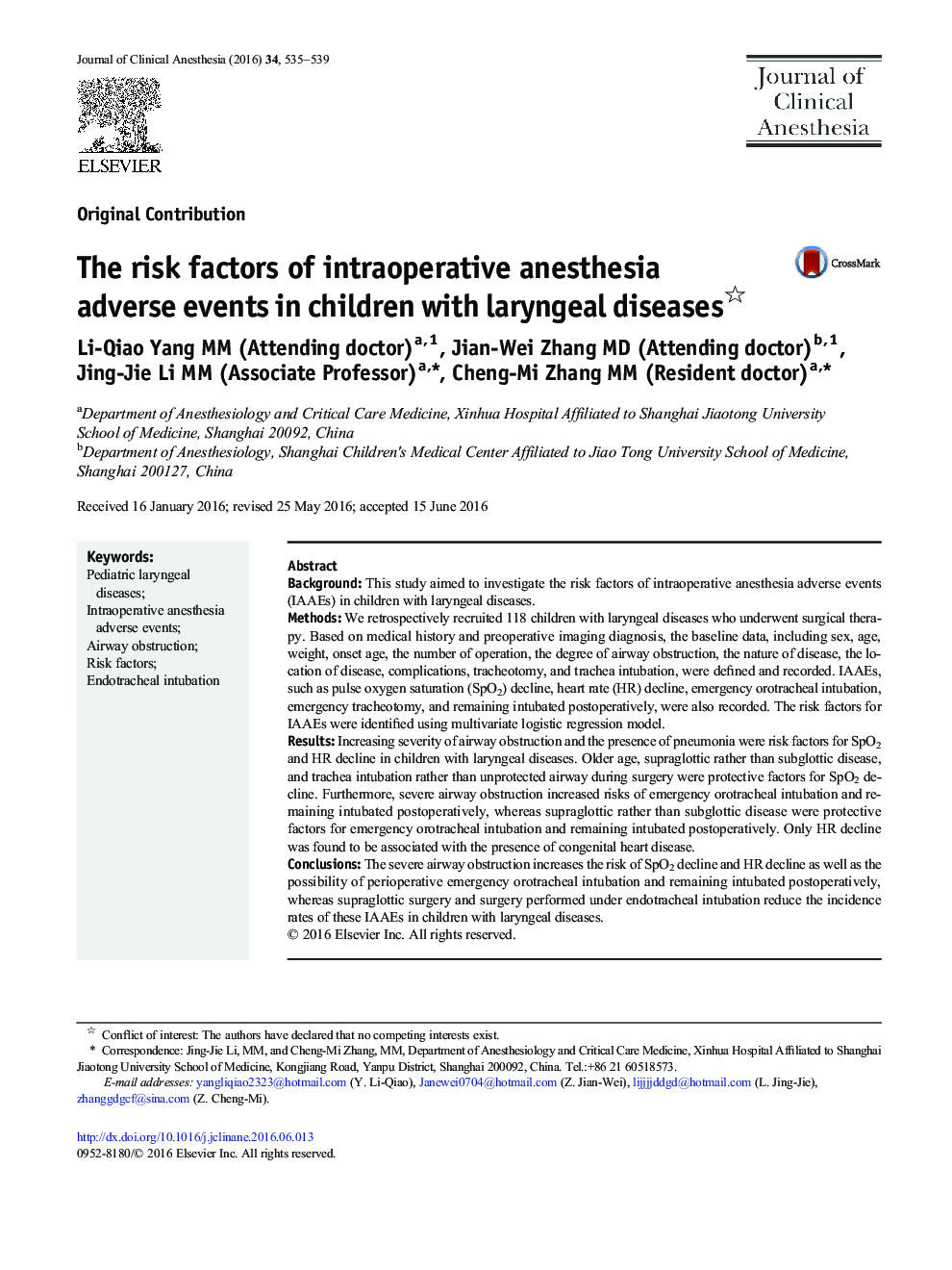| کد مقاله | کد نشریه | سال انتشار | مقاله انگلیسی | نسخه تمام متن |
|---|---|---|---|---|
| 5884568 | 1567656 | 2016 | 5 صفحه PDF | دانلود رایگان |
- Severe airway obstruction and pneumonia were risk factors for SpO2 and HR decline.
- Older age was a protective factor for SpO2 and HR decline.
- Supraglottic disease was a protective factor for main IAAEs except HR decline.
- Severe airway obstruction was a risk factor for emergency intubation.
- Severe airway obstruction was a risk factor for remaining intubated postoperatively.
BackgroundThis study aimed to investigate the risk factors of intraoperative anesthesia adverse events (IAAEs) in children with laryngeal diseases.MethodsWe retrospectively recruited 118 children with laryngeal diseases who underwent surgical therapy. Based on medical history and preoperative imaging diagnosis, the baseline data, including sex, age, weight, onset age, the number of operation, the degree of airway obstruction, the nature of disease, the location of disease, complications, tracheotomy, and trachea intubation, were defined and recorded. IAAEs, such as pulse oxygen saturation (SpO2) decline, heart rate (HR) decline, emergency orotracheal intubation, emergency tracheotomy, and remaining intubated postoperatively, were also recorded. The risk factors for IAAEs were identified using multivariate logistic regression model.ResultsIncreasing severity of airway obstruction and the presence of pneumonia were risk factors for SpO2 and HR decline in children with laryngeal diseases. Older age, supraglottic rather than subglottic disease, and trachea intubation rather than unprotected airway during surgery were protective factors for SpO2 decline. Furthermore, severe airway obstruction increased risks of emergency orotracheal intubation and remaining intubated postoperatively, whereas supraglottic rather than subglottic disease were protective factors for emergency orotracheal intubation and remaining intubated postoperatively. Only HR decline was found to be associated with the presence of congenital heart disease.ConclusionsThe severe airway obstruction increases the risk of SpO2 decline and HR decline as well as the possibility of perioperative emergency orotracheal intubation and remaining intubated postoperatively, whereas supraglottic surgery and surgery performed under endotracheal intubation reduce the incidence rates of these IAAEs in children with laryngeal diseases.
Journal: Journal of Clinical Anesthesia - Volume 34, November 2016, Pages 535-539
